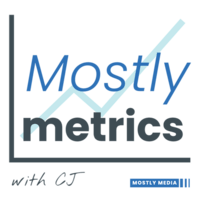IPO season is back, baby. Or… maybe not. Depending on when you read this, it may or may not be poppin.
Every time it feels like the window’s creaking open, something macro and messy slams it shut again: inflation print, geopolitical drama, someone in the Oval office getting hired / fired.
But let’s be optimistic for a minute. Because a few brave souls are filing S-1s, ding donging bells, and trying to make fetch IPOs happen again.

Before we get into the preflight checklist for going public, let’s start with a simple question:
Why go public in the first place?

Here are the top three:
Liquidity for employees
Marketing bump with enterprise customers
Street cred and trust with buyers
The first two reasons get all the airtime. Liquidity makes early employees and VCs happy. Marketing gives you your 15 minutes in Times Square and a picture ringing the bell like a corporate prom king (the pictures can be so cringe but, like, I also really really wanna be in one. Does that make sense?)
But the third reason, customer trust, doesn’t get talked about enough. It should.
Take PagerDuty. They went public in 2019, just after eclipsing $100 million in revenue. That’s early by most standards, then or now. These days you’d be hard pressed to find a company willing to make the leap below $500m in revenue. But it wasn’t about chasing a point-in-time valuation or opportunistically jumping through an open window before it closed. They were intentional about going public because it showed enterprise customers they were here to stay.
Howard Wilson, their long time CFO, said big buyers kept asking the same thing:
“How do we know you’ll still be around in two years?”
When you’re selling mission-critical software, the kind that needs to be up even when your customer’s own systems are down, that question matters. Buyers want visibility. They want to see your balance sheet, your cash flow, your path forward.
As Howard put it,
“Going public took the guesswork out of the conversation. Customers could see we were legit.”
That lesson stuck with me. An IPO isn’t just a marketing moment or liquidity event. For many companies, it’s a credibility play.
What You Actually Need to Be Good At
One of the biggest misconceptions about going public is that you need to have all the answers in-house on day one. You don’t. You’re not launching a space shuttle. You’re filing paperwork and getting your back yard in order.
The IPO is full of one-time activities. Writing the S-1. Working with bankers. Setting a price range. Most of that happens once. So don’t waste time building permanent muscles for temporary problems.
Howard told me that when PagerDuty went public, his team split everything into two buckets:
Stuff you only need to do once to get out the door
Stuff you need to do well quarter after quarter
Subscribe to our premium content to read the rest.
Become a paying subscriber to get access to this post and other subscriber-only content.
UpgradeA subscription gets you:
- In-depth "how to" playbooks trusted by the most successful CFOs in the world
- Exclusive access to our private company financial benchmarks
- Support a writer sharing +30,000 hours of on-the-job insights

